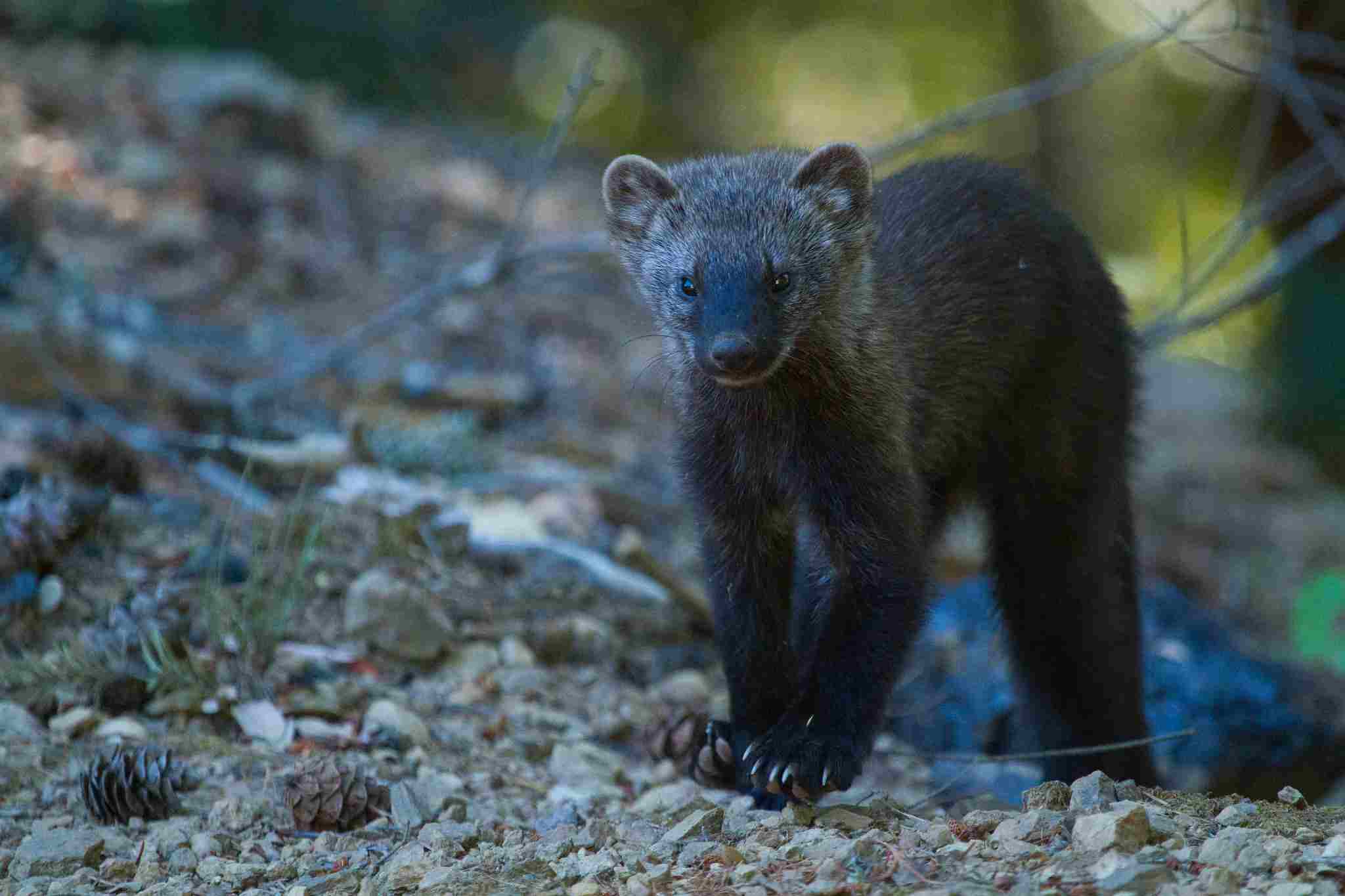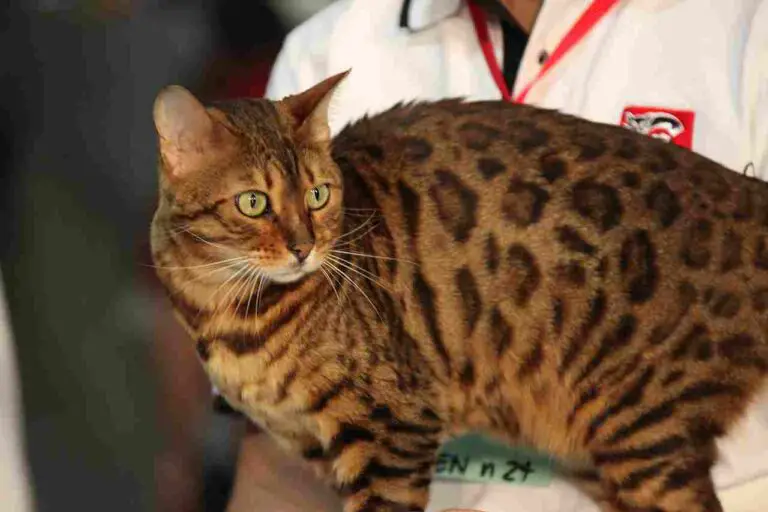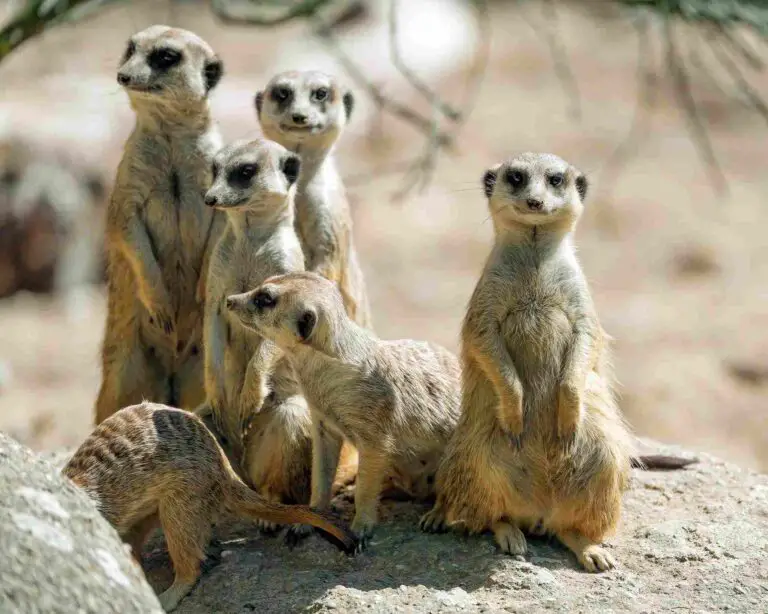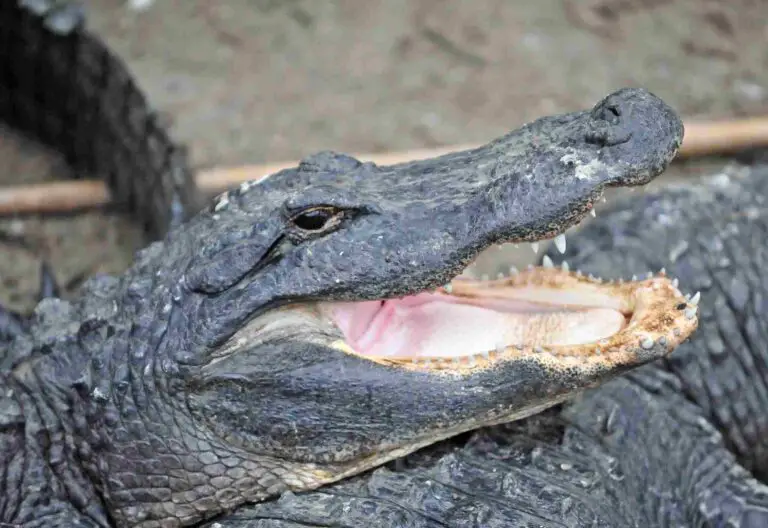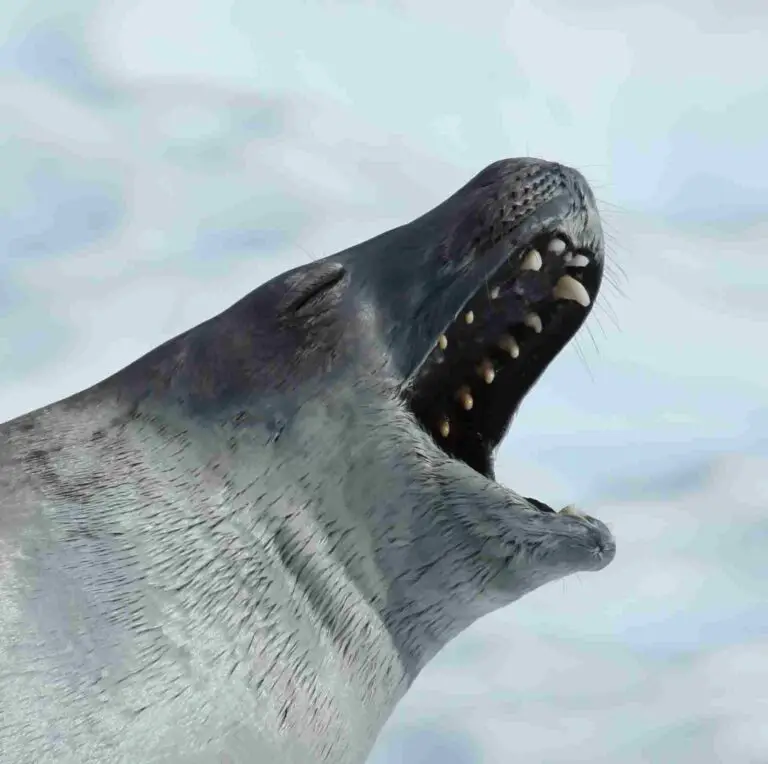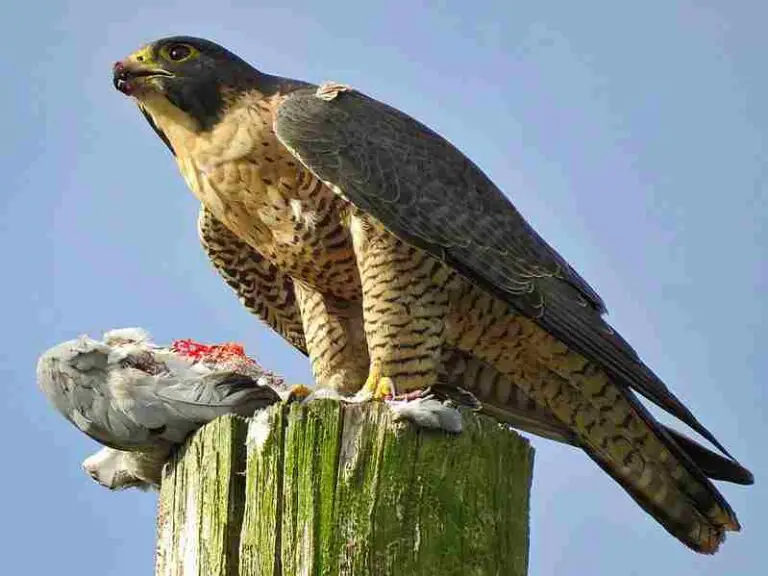1. Grizzly Bear
The grizzly bear (Ursus arctos horribilis) is one of the largest predators found in Washington State. Known for its distinctive hump, massive size, and formidable claws, the grizzly bear primarily inhabits remote mountainous regions such as the North Cascades. Despite their fearsome reputation, grizzly bears are generally solitary creatures, foraging for a diet that consists mostly of roots, berries, fish, and small mammals. They play a critical role in the ecosystem by dispersing seeds and contributing to soil health through their foraging activities. Due to habitat loss and hunting, grizzly bear populations have significantly declined in Washington, and they are now considered a threatened species in the state.
Efforts are underway to protect and restore the grizzly bear population in Washington, focusing on conservation and reintroduction strategies. These initiatives aim to maintain genetic diversity and create corridors to connect isolated bear populations, allowing for greater movement and gene flow. The success of these programs depends on public awareness and cooperation with local communities, ensuring that human-bear conflicts are minimized. By protecting grizzly bears and their habitats, Washington seeks to preserve the biodiversity and natural beauty of its wilderness areas for future generations.
2. Black Bear
The black bear (Ursus americanus) is the most common bear species found in Washington State, inhabiting a wide range of habitats from coastal rainforests to mountainous regions. Unlike grizzly bears, black bears are generally smaller and lack the distinctive shoulder hump. Their color can vary from jet black to cinnamon brown, and they are known for their adaptability and intelligence. Black bears are omnivorous, with a diet that includes fruits, nuts, insects, small mammals, and occasionally carrion. Despite their generally solitary nature, they can be quite curious and sometimes venture into human-inhabited areas in search of food.
Conservation efforts for black bears in Washington focus on maintaining their natural habitats and reducing human-bear conflicts. Public education is a key component, teaching people how to properly store food and garbage to prevent attracting bears. Wildlife management also involves monitoring bear populations to ensure they remain healthy and sustainable. With proper management and community cooperation, black bears can continue to thrive in Washington while coexisting peacefully with human populations.
3. Wolf
Wolves (Canis lupus) have a storied history in Washington State, with their populations greatly reduced by early 20th-century hunting and habitat loss. However, recent conservation efforts have led to a resurgence of wolves in certain regions, particularly in the northeastern part of the state. Wolves are pack animals, typically consisting of a dominant breeding pair and their offspring. They play a crucial role in the ecosystem by regulating prey populations and fostering a balanced environment. Wolves primarily feed on large ungulates like deer and elk, but they are also known to hunt smaller mammals when necessary.
The return of wolves to Washington has sparked both excitement and controversy. On one hand, their presence contributes to the restoration of ecological balance; on the other, it has led to conflicts with ranchers and farmers. Conservation strategies aim to address these conflicts through compensation programs and non-lethal management techniques, such as using livestock guard animals or deterrents to keep wolves away from livestock. These efforts require careful planning and cooperation among wildlife managers, ranchers, and conservationists to ensure a future where wolves can thrive without endangering the livelihoods of local communities.
4. Cougar
Cougars (Puma concolor), also known as mountain lions, are one of the most elusive predators in Washington State. They are highly adaptable and can thrive in various habitats, from dense forests to arid scrublands. These solitary predators are known for their powerful build, exceptional agility, and sharp senses, allowing them to stalk and ambush their prey. Cougars primarily hunt deer, but they are opportunistic and will also prey on smaller mammals, birds, and even domestic animals if given the chance. As with other large predators, human-cougar interactions can occur, particularly as human developments encroach on cougar habitats.
Managing cougar populations in Washington involves a delicate balance between conservation and public safety. Wildlife officials monitor cougar numbers and their impact on prey populations, ensuring a sustainable ecosystem. Public education plays a vital role in reducing human-cougar conflicts, emphasizing safety measures such as avoiding hiking alone in cougar territory and securing outdoor pets and livestock. In cases where cougars pose a direct threat to humans, wildlife authorities may use targeted removal to address the risk. By promoting coexistence and minimizing conflict, Washington aims to maintain healthy cougar populations while safeguarding public safety.
5. Fisher
The fisher (Pekania pennanti) is a medium-sized carnivorous mammal found in Washington State, primarily inhabiting dense forests with abundant tree cover. They are known for their slender bodies, bushy tails, and sharp teeth, which they use to hunt a variety of prey, including rodents, birds, and rabbits. Fishers are also one of the few predators capable of hunting porcupines, using their agility to avoid the quills and strike a fatal blow. Despite their hunting prowess, fishers faced significant declines in the past due to trapping and habitat loss, leading to their extirpation in many parts of Washington.
Conservation efforts have focused on reintroducing fishers to suitable habitats in Washington to restore ecological balance. These reintroduction programs involve careful planning to ensure that the reintroduced populations have enough resources to thrive and that they do not negatively impact other wildlife. Public education and community involvement are also key components, as fishers can sometimes come into contact with humans and domestic animals. The success of these programs demonstrates the potential for restoring native predator populations through cooperative conservation efforts, offering hope for other species facing similar challenges.
6. Canada Lynx
The Canada lynx (Lynx canadensis) is a rare and elusive feline predator native to Washington State, primarily found in the northern parts of the Cascades. These medium-sized cats are well adapted to snowy environments, with large, fur-covered paws that act as natural snowshoes. The Canada lynx is a specialized predator, primarily preying on snowshoe hares, which comprise the bulk of its diet. This specialization has made the lynx population in Washington particularly sensitive to changes in hare populations and habitat conditions.
Conservation efforts for Canada lynx in Washington focus on preserving their preferred habitat of dense forests with a significant snowpack. This involves protecting forested areas from excessive logging and other disruptions, as well as monitoring lynx and snowshoe hare populations to ensure ecological stability. The lynx’s elusive nature makes research and tracking a challenge, but advances in technology and cooperation among conservation groups have contributed to a better understanding of their behavior and habitat needs. The future of the Canada lynx in Washington depends on the continued protection of their natural environment and the management of factors that threaten their survival.
7. Eagle
Eagles, particularly the bald eagle (Haliaeetus leucocephalus), are among the most majestic and recognizable predators in Washington State. Known for their striking white head and tail feathers, bald eagles are often found near large bodies of water where they can hunt for fish, their primary source of food. Eagles are powerful flyers with keen eyesight, allowing them to spot prey from great distances. They are also opportunistic feeders, consuming carrion and other small mammals or birds when fish are scarce. The bald eagle’s successful recovery from the brink of extinction is a testament to effective conservation efforts, as their populations declined drastically due to DDT use and habitat loss.
In Washington, bald eagle populations have made a significant comeback, thanks to protective measures and public awareness campaigns. Conservation efforts have focused on preserving critical nesting and foraging habitats, often near rivers and lakes. Additionally, regulations have been enacted to minimize human disturbance around eagle nests, allowing them to raise their young without interference. As the bald eagle population continues to grow, they serve as a symbol of successful wildlife conservation and a reminder of the importance of protecting natural habitats for future generations.
8. Hawk
Hawks are a diverse group of birds of prey found throughout Washington State, with species like the red-tailed hawk (Buteo jamaicensis) and Cooper’s hawk (Accipiter cooperii) among the most common. These raptors are known for their keen eyesight, powerful talons, and impressive flying abilities. They typically hunt small mammals, birds, and reptiles, with some species specializing in specific prey types. Hawks play a vital role in maintaining ecological balance by controlling populations of smaller animals, thus contributing to a healthy ecosystem.
In Washington, hawks are often seen soaring over open fields and along forest edges, where they can easily spot their prey. Conservation efforts for hawks focus on protecting their habitats and ensuring that human activities do not interfere with their nesting and hunting practices. Public education and awareness are crucial in reducing negative interactions with hawks, particularly around nesting sites. With ongoing conservation and responsible land use, hawks will continue to be a prominent and vital part of Washington’s avian predator community.
9. Owl
Owls are nocturnal predators found throughout Washington State, with species like the great horned owl (Bubo virginianus) and the barred owl (Strix varia) being among the most widespread. Known for their distinctive calls, sharp talons, and excellent night vision, owls are highly adapted for nocturnal hunting. They primarily prey on small mammals such as mice and rabbits, but they are also known to eat birds, insects, and reptiles. Owls play a critical role in controlling rodent populations, helping to maintain ecological balance in their habitats.
Conservation efforts for owls in Washington focus on protecting their nesting and hunting territories. Owls often require large, mature trees for nesting, making forest conservation crucial for their survival. Additionally, public education about the importance of owls in the ecosystem helps reduce negative interactions, such as those caused by habitat destruction or intentional harm. By maintaining healthy forests and promoting awareness of owls’ ecological value, Washington aims to ensure the continued presence of these remarkable nocturnal predators in the state’s diverse landscapes.
10. Snake
Washington State is home to a variety of snake species, ranging from the non-venomous gopher snake (Pituophis catenifer) to the venomous western rattlesnake (Crotalus oreganus). Snakes are important predators in the ecosystem, playing a key role in controlling rodent populations. They are highly adaptable, found in diverse habitats such as grasslands, forests, and rocky outcrops. Despite their ecological importance, snakes often face negative perceptions and fear from the public, leading to unnecessary harm and habitat destruction.
Conservation efforts for snakes in Washington focus on educating the public about their role in the ecosystem and promoting safe coexistence. These efforts involve dispelling myths and providing guidelines for avoiding snakebites, especially with venomous species. Protecting snake habitats from urban development and agricultural expansion is also crucial to maintaining healthy snake populations. Through continued education and responsible land use, Washington aims to ensure that snakes can thrive without posing a significant risk to humans.
11. Spider
Spiders are a diverse group of arachnids found throughout Washington State, playing a critical role in controlling insect populations. Common species include orb-weavers, wolf spiders, and jumping spiders. These arachnids are often feared, but most are harmless to humans and contribute to a balanced ecosystem by preying on various insects. Their diverse habitats range from forests to grasslands and urban areas.
Conservation efforts for spiders in Washington focus on raising public awareness about their ecological importance and reducing fear through education. Efforts also emphasize preserving natural habitats to ensure spider populations remain healthy. Through these approaches, Washington seeks to maintain a balance in its ecosystems while fostering a greater understanding of these often-misunderstood creatures.
*Summary
-
Grizzly Bear
-
Large predator with a distinctive hump and formidable claws.
-
Inhabits remote mountainous regions like the North Cascades.
-
Diet consists of roots, berries, fish, and small mammals.
-
Conservation efforts focus on restoring populations and minimizing human-bear conflicts.
-
Black Bear
-
Most common bear species in Washington.
-
Adaptable to various habitats, from forests to mountainous regions.
-
Omnivorous diet with a focus on fruits, nuts, insects, and small mammals.
-
Conservation efforts focus on reducing human-bear conflicts through public education.
-
Wolf
-
Pack animal with resurgence in northeastern Washington.
-
Primary prey includes large ungulates like deer and elk.
-
Conservation strategies aim to minimize conflicts with ranchers and farmers.
-
Cougar
-
Solitary predator found in various habitats from forests to arid scrublands.
-
Primarily preys on deer, but will hunt smaller mammals and birds.
-
Conservation focuses on balancing cougar populations with public safety concerns.
-
Fisher
-
Medium-sized carnivorous mammal with a slender body and bushy tail.
-
Hunts various prey, including rodents and porcupines.
-
Conservation efforts focus on reintroducing fishers to suitable habitats.
-
Canada Lynx
-
Medium-sized feline predator with fur-covered paws for snowy conditions.
-
Primarily preys on snowshoe hares.
-
Conservation focuses on preserving dense forests with significant snowpack.
-
Eagle
-
Bald eagle is a common and iconic predator in Washington.
-
Primarily feeds on fish but is opportunistic in diet.
-
Conservation efforts have successfully restored bald eagle populations.
-
Hawk
-
Diverse group of birds of prey, including red-tailed hawk and Cooper’s hawk.
-
Hunts small mammals, birds, and reptiles.
-
Conservation focuses on protecting habitats and reducing human disturbance.
-
Owl
-
Nocturnal predator with excellent night vision and keen hearing.
-
Preys on small mammals like mice and rabbits.
-
Conservation focuses on preserving mature trees for nesting and hunting territories.
-
Snake
-
Includes both non-venomous and venomous species like the western rattlesnake.
-
Plays a key role in controlling rodent populations.
-
Conservation involves public education and habitat protection.
-
Spider
-
Diverse group of arachnids that play an important role in the ecosystem.
-
Typically preys on insects and other small arthropods.
-
Conservation focuses on educating the public about their ecological role.
